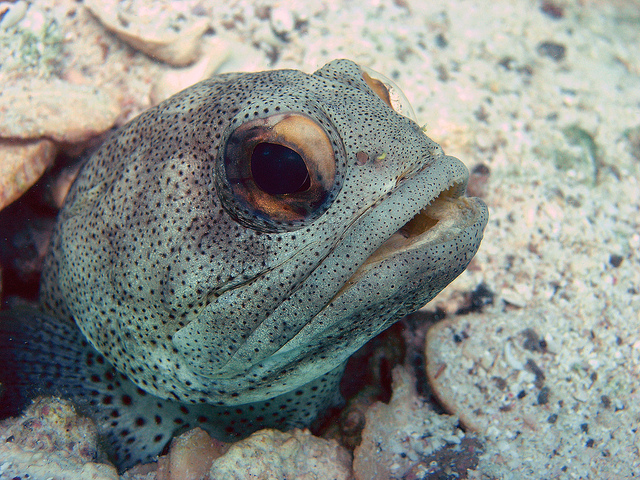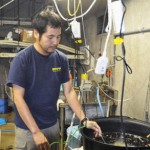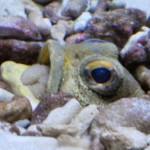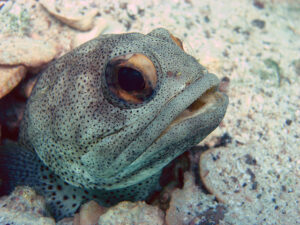Persistence and thoughtfulness has helped marine biologist Kentaro Amemiya of Tokyo Sea Life Park succeed in rearing the unusual finespotted jawfish (Opistognathus punctatus) in captivity. Regardless of breeding success coming from the scientific world or the hobbyist side, each advancement is impressive and what Amemiya has done with the finicky species in inspirational.
Not only had Amemiya been able to keep the fish in captivity, a feat of its own, but has also succeeded in getting these mouthbrooders to breed in captivity and on display for the public. With most exhibits in aquariums, having a way for people to see exactly how fish behave in the wild is a top priority and Amemiya set out to do that with this unique fish.
“Here we arrange our exhibitions so that visitors can enjoy observing the fish from four perspectives: swimming, eating, self-defense and breeding,” Amemiya, who is in charge of rearing the fish, said. “The fine- spotted jawfish is a species good for observing the latter two aspects.”
These fish grow as long as 40 cm and may not be the typical aquarium fish we see in the hobby, but it is a beautiful and interesting species regardless. They are native to the Eastern Pacific ocean and found in the area starting around the Gulf of California and stretches to the shores of Panama.
The finespotted jawfish are naturally paternal mouthbrooding fish, incubating the eggs in their mouths for about 10 days. Thanks to Amemiya’s resourcefulness, visitors can even see the mass of eggs inside the mouth of the male fish.
After the trials and tribulations of just transporting the fish to Japan (anyone that’s shipped corals or fish a long distance can relate), just getting them to burrow and breed in captivity proved to me challenge.
First off, just like in Murphy’s Law we encounter in our own tanks the fish decided to find a spot to burrow in the corners, far away from being able to be viewed by the public. By placing rocks in the corners, limiting the ‘prime’ real estate for burrowing, the jawfish got the hint and creating burrows front-and-center.
This wasn’t the end of the troubled with burrows. Soon enought Amemiya noticed the sand was too loose and didn’t provide a strong structure to support the walls of the caves. By adding larger bits of coral skeletons and clamshells, the fish started using the new material to build stronger burrows — all on their own.
“They did it by instinct, without being taught by anyone,” he said. “Nature is really amazing. I never get bored watching them making burrows, carrying the sand here and there or fighting over it with each other.”
The final piece of the puzzle was getting the fish to breed and incubate the eggs. The males would either give up brooding or to swallow the eggs all together. Feeling the fish might be sensitive to the sights and movements outside the tank, he added a film to the inside of the tank that made the outside world invisible to the fish. This trick worked and the fish began to breed.
As Matt Pedersen and other breeders know, once the eggs hatch the true challenge starts. Getting the fry to take food and make it to adulthood can prove to be an uphill battle. Amemiya creating a rearing tank for the hatched fry using a slow flow current rising from the bottom.
As he points out, “Fry that have just hatched are weak swimmers, but I came up with the idea that if they circulate inside the tank along with the feed, there would be a bigger chance for them to stumble upon the food and thus eat more.”
So far, his methods are working. He has six fish born in 2010 that have reached their full size and has around 40 others born since then are also doing well. Next up — raising the grandchild generation.
If you happen to get to Tokyo, make sure to go check out this exhibit and for anyone looking for a unique speaker, maybe look at bringing Kentaro Amemiya to discuss his results.
[via Japanese Times]






